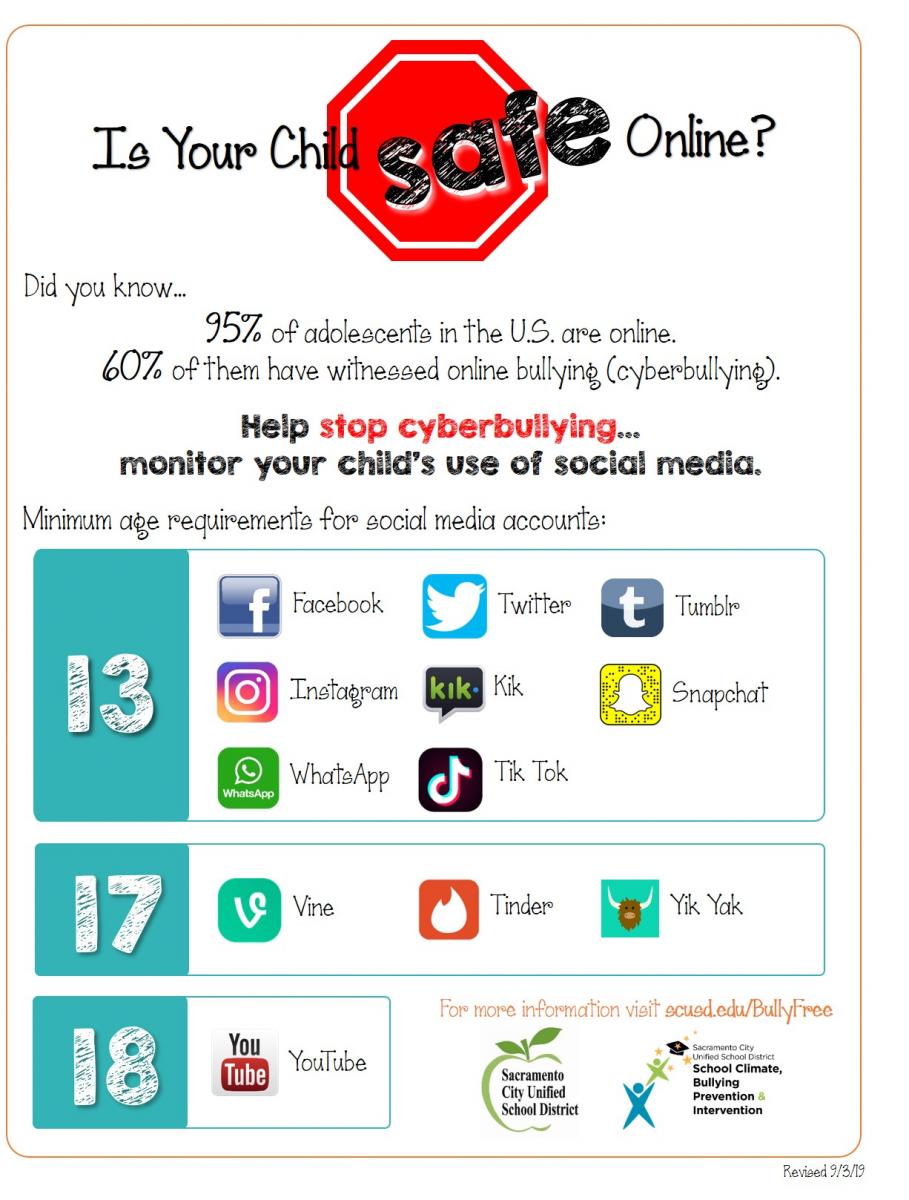Given the power of social media to provide instant and
far-reaching communication, it can be easy to “blame technology”;
however, it is a social problem. Parents and caregivers
must know when it is appropriate for their child to open and use
social media accounts.
What can parents and caregivers do to protect their
students on social media?
- Be on the same apps as your children. If your kids use
Snapchat, Instagram, etc, set up an account, spend time on the
app, have them teach you how it works, get familiar with where
private messaging happens on the app, and monitor them regularly.
Also be aware of “fake” accounts – many youth will have one
account that they allow family to monitor and another that is
just for friends. You will always be the best tool for
keeping your kids safe
- Talk to your children and remind them that they do not need
“honest” feedback from strangers
- Teach your children to avoid gossiping both offline and
online – even if they are “anonymous”
- Discuss the dangers of anonymous apps and how they can have
an impact on real life
- Follow our suggestions to help your child prepare for the
responsibility of being on social media:
- Ages 0-13: Private
- Ages 13: Have a family discussion regarding what
should go public
- Age 14-15: Build a personal website and post
positive volunteer photos (and accomplishments/projects)
online
- Age 17: Colleges should be able to find a positive
online footprint for your student
Minimum Age Requirements for Various Social Media
Platforms:
- Facebook, Twitter, Instagram, Pinterest, Tumblr, Kik, and
Snapchat: 13 years old
- LinkedIn: 14 years old
- WhatsApp: 16 years old
- Vine and Tinder: 17 years old.
Some platforms, such as YouTube, WeChat and Kik, have a minimum
age required of 18, although kids aged 13-17 can sign up with
parent’s permission.


